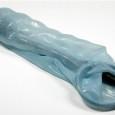The prostate is a small gland of the male reproductive system located between the bladder and penis and is palpable per rectum. Prostate not only contributes 25-30% to the semen; the main function of prostatic fluid is nourishment and protection of sperms, but also propels fluid during ejaculation.
Structure of Prostate:
Image: cancer.gov
Disclaimer: condom-sizes.org is supported by its readers. When you buy through links on our site, we may earn an affiliate commission. Learn more.
The Zones:
- Peripheral Zone (Majority of cancers originate here)
- Central Zone
- Transitional Zone (Majority of BPH originates here)
- Stroma
The Lobes:
- Anterior Lobe
- Posterior Lobe (Site for Carcinoma)
- Right & Left lobes (Site for BPH)
- Middle Lobe (Site for BPH)
When to do an examination
Prostate Examination is usually done when you’ve symptoms including:
- Increase Urinary frequency
- Nocturia
- Urgency
- Urge Incontinence
- Poor steam
- Hesitancy
- Intermittent Steam
- Incomplete Emptying
- Post Void Dribbling
Your symptoms might relate to any of the following pathologies:
- Benign Prostatic Hyperplasia (BPH) is a non-malignant cause of prostate enlargement with age and exposure to testosterone (1). As prostate sits over urethra, its enlargement can cause compression of the urethra and can lead to
- Prostate Carcinoma doesn’t have specific symptoms, although it may cause obstructive symptoms it doesn’t just stay there. The most common spread is to lower spine causing backache.
Screening for Prostate Cancer by PSA with DRE is recommended by the American Cancer Society (ACS) as follows:
- Age 50 for men who are at average risk of prostate cancer and are expected to live at least 10 more years.
- Age 45 for men at high risk of developing prostate cancer. This includes African Americans and men who have a first-degree relative (father, brother, or son) diagnosed with prostate cancer at an early age (younger than age 65).
- Age 40 for men at even higher risk (those with more than one first-degree relative who had prostate cancer at an early age).
- Inflamed or infected prostate (Prostatitis)
Who should do it
A prostate examination is done by your doctor either a general practitioner or a specialist (Urologist or Surgeon) at his or her clinic. It’s a few minutes procedure done without any analgesia or anesthesia and with slight discomfort or hesitancy by a patient.
How is prostate examination done
source: cancer.gov
DRE is a fairly quick and simple procedure, as prostate can be felt per rectum your doctor can get feel for any irregularities or hardened enlarged prostate by inserting a finger through the anus into a rectum. It requires expertise to differentiate abnormal from normal prostate.
- Informed consent is obtained and is made sure anal fissure or hemorrhoids are ruled out before proceeding.
- Carefully whole procedure is briefed to the patient.
- For adequate privacy, your doctor may take you to a cubicle or examination room.
- You’ll be asked to remove clothes and put on an examination gown.
- For easing anal muscles, you’ll be put in knee-chest (proctologic) position or lateral decubitus position in which you’re asked to lie on the left side with the buttocks near the edge of the examining table or bedside with the right knee and hip in slight flexion.
- Your doctor puts on surgical gloves and lubrication to avoid discomfort.
- You’ll be asked to relax your sphincter and perineal muscles.
- The prostate is felt for bumps, size of the gland, soft or hard spots, nodularity, and other abnormalities.
- You may feel pressure or discomfort during an examination. If it hurts, tell your doctor immediately.
- That’s it. The examination is done in few minutes and doctor will remove the finger gently and you’ll be offered a tissue to clean perineal area.
Anticipation is worse than reality applies here so well. Patient’s hesitancy for prostate examination is prolonged and anxiety provoking whereas examination is relatively painless and quickly done at the clinical setting. While that trepidation is perfectly understandable, remember that a prostate exam can catch medical problems before they become serious!
References:
- Challenging the Inevitability of Prostate Enlargement: Low Levels of Benign Prostatic Hyperplasia Among Tsimane Forager-Horticulturalists <link>
Benjamin C. Trumble, 1 Jonathan Stieglitz, 2 , 3 Daniel Eid Rodriguez, 4 Edhitt Cortez Linares, 4 Hillard S. Kaplan, 2and Michael D. Gurven 1






 Ali Anique is a doctor at Nishtar Hospital, the biggest hospital of south Punjab province in Pakistan. He holds an MBBS degree from the Nishtar Medical College (now university).
Ali Anique is a doctor at Nishtar Hospital, the biggest hospital of south Punjab province in Pakistan. He holds an MBBS degree from the Nishtar Medical College (now university).